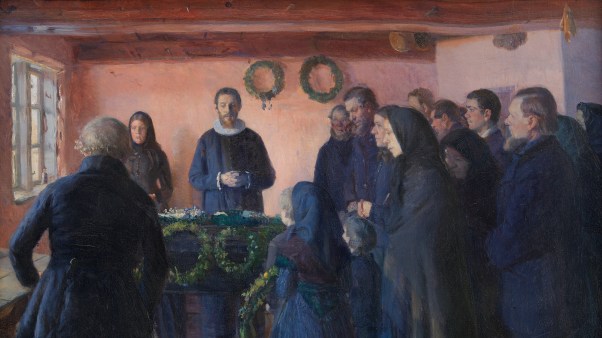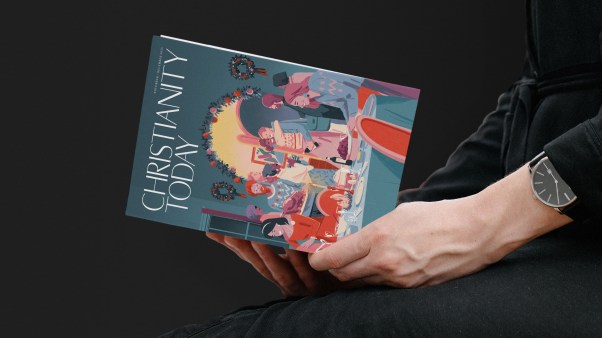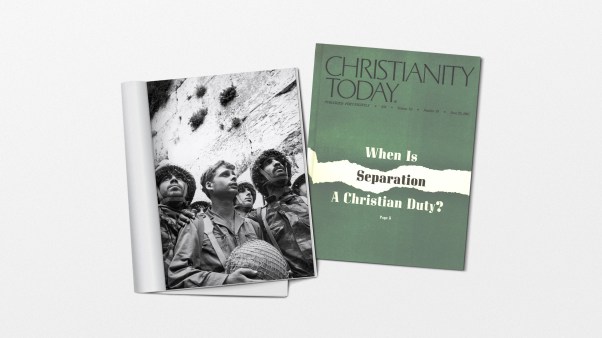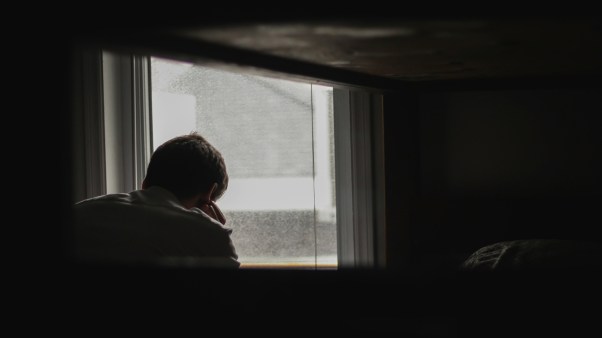The evidence of the US drug crisis is all around us, every single day. But because it is a lonely crisis, we often need someone to show us where to look. Having covered the opioid crisis as a reporter for the past seven years, I had the job of asking the “where” question to other people involved in the crisis.
The Least of Us: True Tales of America and Hope in the Time of Fentanyl and Meth
Bloomsbury
432 pages
$16.85
This has given me new eyes in my own city, New York. I’ve noticed more people shooting up, and one night on my way home I saw two people sprawled unconscious on the floor of the subway platform after overdosing. Emergency medical personnel came quickly and saved them. I now carry naloxone (also known by its brand name Narcan), the overdose reversal drug, which looks like a little bottle of nasal spray.
In addition to seeing the crisis all around me, I have begun noticing Christians working in these places. I remember sitting in a car on a main drag in Camden, New Jersey, one night in 2015, watching prostitutes shiver in the snow trying to find work to pay for drugs. The Christian woman sitting next to me in the car, Brenda Antinore, had at one time been addicted to drugs herself and was a friend to these women. She checked in on them daily, brought them toiletries and snacks, knew them all by name, and had a recovery home within walking distance where they could come when they were ready.
One of the women from the street I met and interviewed died of a drug overdose later. Antinore was one of the few people checking in on these women besides police, drug dealers, and johns. She was their emergency contact. Some of the women Antinore has loved went into recovery.
These are the imperfect examples and testimonies that deserve greater attention from the American church. But to know the testimonies, we need a trustworthy storyteller. Journalist Sam Quinones has written The Least of Us: True Tales of America and Hope in the Time of Fentanyl and Meth, which came out in November 2021, just as data was emerging from the Centers for Disease Control and Prevention of record-breaking drug overdose deaths during the pandemic.
Testimonies of addiction
Quinones is, to me, the best documenter of the American drug crisis, and not just because he is an engrossing storyteller. Even in stories of grief and crime he finds simple and profound insights, and he always reveals the dignity of the people he is writing about. He is not moralizing toward people in the drug world, but he also refuses to depict them solely as victims or people sick with a disease. The way he reports the stories of “the least of us” rings true from my own experience reporting on this crisis.
Quinones was among the first to write in-depth about the opioid crisis in his fantastic 2015 book Dreamland: The True Tale of America’s Opiate Epidemic, in which he reported from Mexican farms and Appalachian hollers . He shows the traits of a good journalist in seeing obvious connections and societal trends that few others notice at the time, like how addiction pushed white law-and-order conservatives toward criminal justice reforms like drug recovery instead of prison time. (My personal theory is that the opioid crisis also explains a lot about the 2016 election, including former President Donald Trump’s promises about sealing the Mexican border, but Quinones doesn’t go there.)
While Quinones is not writing from an explicitly Christian perspective, many of the stories he tells involve Christians and church communities. The book’s opening quote is Jesus’ words from the King James Version of Matthew 25:40: “In as much as ye have done it unto one of the least of these my brethren, ye have done it unto me.” In both Dreamland and The Least of Us, he focuses on the loss of community in America, the further isolation that comes from opioids, and some Christians as repairers of communities.
He chronicles church failures too: “In Carter County [Tennessee], community was created in church; there, children were raised, business connections were forged, romances begun. But an addict or unwed mother entered these churches with difficulty. Clothes drives, casseroles for families with a terminally ill child—churches knew how to do that. But addiction was different.” I have also come across this theme in my reporting over the years.
Some churches’ discomfort with addiction is why we need the testimonies of addiction.
This is what I have heard in interviews over the years: People in recovery are keenly aware that they are not in control, that they have failed people. They know they are weak. They know they cannot remain sober on their own willpower. They know that community is essential to their survival. Their stories, full of halting relapse after relapse, are anything but perfect trajectories of redemption.
These are lessons from the fringes that Americans need to hear, because the stories of addiction speak directly into the worst parts of American culture, a bigger theme Quinones addresses too. Even as American culture leaves us increasingly isolated, it still demands high measures of professional and personal performance, leaving little room for communal grace and forgiveness. We, members of the richest society of all time, think we can solve problems ourselves, but the truth is we will fail both ourselves and others. When someone experiences failure, that will often lead to coping mechanisms like substances.
We need a community where that failure and recovery can happen repeatedly. In my opinion, it needs to be a place built on supernatural grace. I have come across a church like that in Brooklyn, Recovery House of Worship, where all the staff are recovering from addiction. I can’t fully describe the atmosphere of that church, but it is welcoming to the lowly. One of the staffers, Chris Hook, told me about relapsing after he first started going to the church—and people from the church came looking for him, knocking on his door. That meant a lot to him.
Touching the dragon
You might be thinking, Yes, I’ve read quite enough about opioids, the malign role of pharmaceutical companies, and “deaths of despair.” If so, Quinones’s book will still offer you fresh insights, because he notices society-level shifts others don’t notice. He writes about the massive influx of a new kind of meth, P2P meth instead of the ephedrine-based alternative. As he argues, this new version correlates with a recent rise in mental illness, violence, and homelessness.
Though his evidence is mainly anecdotal, Quinones tells story after story of what P2P meth was doing to people: They were seeing angels and demons and barking like dogs in public. “Ephedrine-made meth wasn’t good for the brain, but it was nothing like this,” he writes. More shocking, given the widespread societal effects, he shares that there are no scientific studies comparing ephedrine-based meth with P2P meth.
Scientific research needs to back up his claims on this new meth, but Quinones has a lot of experience reporting on drug markets. If his thesis is true, I have a new understanding of some of the mental illness I see on the streets of New York. I can understand better why, when I interview emergency room doctors, they mention first how much violence they experience on the job now.
We are living in a time of record drug-overdose deaths, but because of meth, the church needs to be prepared for more people living with substance abuse.
“Meth didn’t kill people at nearly the same rate,” Quinones writes, comparing it to fentanyl. “It presented, instead, the rawest face of living addiction. Meth users dragged themselves through the nighttime streets, howling, hysterical, starving. That part of addiction, one counselor told me, ‘people don’t want to touch it.’”
I understand why people are afraid to get close to addiction. It is an ugly dragon. But that’s why we need stories from someone close to it: familiarizing readers, bringing things into the light, and showing us the helpers who reach out to prostitutes in the snow.
Emily Belz is a news reporter for Christianity Today.









